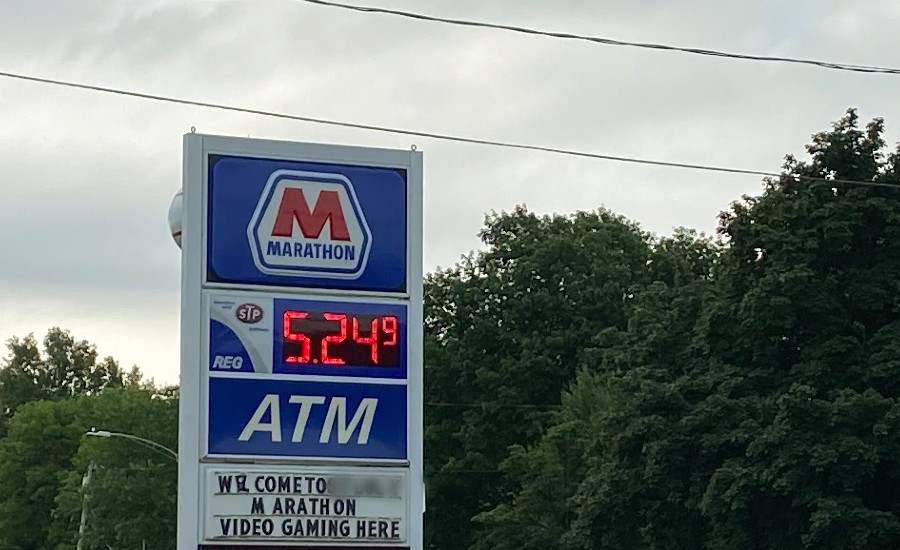There’s a saying in the confectionery industry that I often hear repeated: “Candy is recession proof.”
Over the last couple years, a second clause has been added: “Candy is also, mostly, pandemic proof.”
However, as the industry faces yet another obstacle, we soon will get to see first-hand if candy is recession, pandemic and inflation proof.
On Friday, the U.S. Labor Department released an inflation report showing that the cost of groceries surged by 11.9 percent for the year ending in May. That's the largest year-on-year increase since 1979, according to CNN.
However, those increases don’t even factor in the current surge in gas prices.
I live across the street from a gas station, and every week for the last few months, I have watched the numbers slowly rise. Like a time bomb that counts up.
Here in northern Illinois, gas was $3.59 per gallon at the Marathon by my house in February. I know because I took a photo of a snowstorm that day and happened to catch the gas price sign in the image. Now, on June 13, it’s $5.24 per gallon. That’s a $1.65 increase in about four months.
Nationally, in the United States, gas hit an average of $5 per gallon last week. It’s the first time gas has ever been that high, although that record is not adjusted for inflation. According to CNN, the national average was $4.07 when the current run of price increases began April 15. Which means gas has increased 23 percent in less than two months.
And the surge in gas prices has itself only just begun. CNN Reports that it’s expected to hit $6 per gallon on average later this summer.
But how much room do consumer packaged goods companies even have to increase their prices in response to more expensive gas? And what happens when things hit a tipping point?
According to new research from The NPD Group, more than 8 in 10 U.S. consumers are planning to make changes to mitigate their product spending in the next three to six months. Consumers said they plan to look for more promotions, seek generally less expensive items or even cut back on purchases overall.
In addition to making these kinds of proactive spending changes, nearly 70 percent of consumers indicated labor shortages have caused reactive changes to their purchases in the past six months, whether going to a different retailer to eliminating the planned purchase altogether.
“There is a tug-of-war between the consumer’s desire to buy what they want and the need to make concessions based on the higher prices hitting their wallets,” said Marshal Cohen, chief retail industry advisor for NPD. “And consumers aren’t just buying less stuff, they are shopping less, which means a loss of the impulse-shopping moments that are critical to retail growth.”
The foundation of the saying about candy being recession proof is that it’s seen by many consumers as an inexpensive indulgence. Even if they can’t afford a nicer car, or a new dress, they can probably spare a few more dollars for some chocolate. The question is, will they hit a tipping point if prices continue to increase?
Cohen did offer some advice.
“Marketers must be well versed in all the conditions influencing their retail channel, and their target consumer or they will risk missing growth opportunities,” Cohen said. “An appealing shopping environment, displays that make the product pop, and persuasive promotions are necessary to get more items into the basket when consumers do shop.”
In other words, it’s all in the details, from the packaging to the exact price.
There is one small bit of good news in all this: Any companies that can survive the economic turbulence heading our way after already navigating the pandemic can probably get through anything.

